Request A Car Rental
Travelling to Mongolia and need a car rental plus extra equipments?
As the harsh Mongolian winter begins to loosen its grip on the vast steppes, families across the country prepare for their most important celebration of the year – Tsagaan Sar, the Lunar New Year. The name literally translates to "White Moon," but its significance runs far deeper than its literal meaning, touching the very heart of Mongolian culture and tradition.
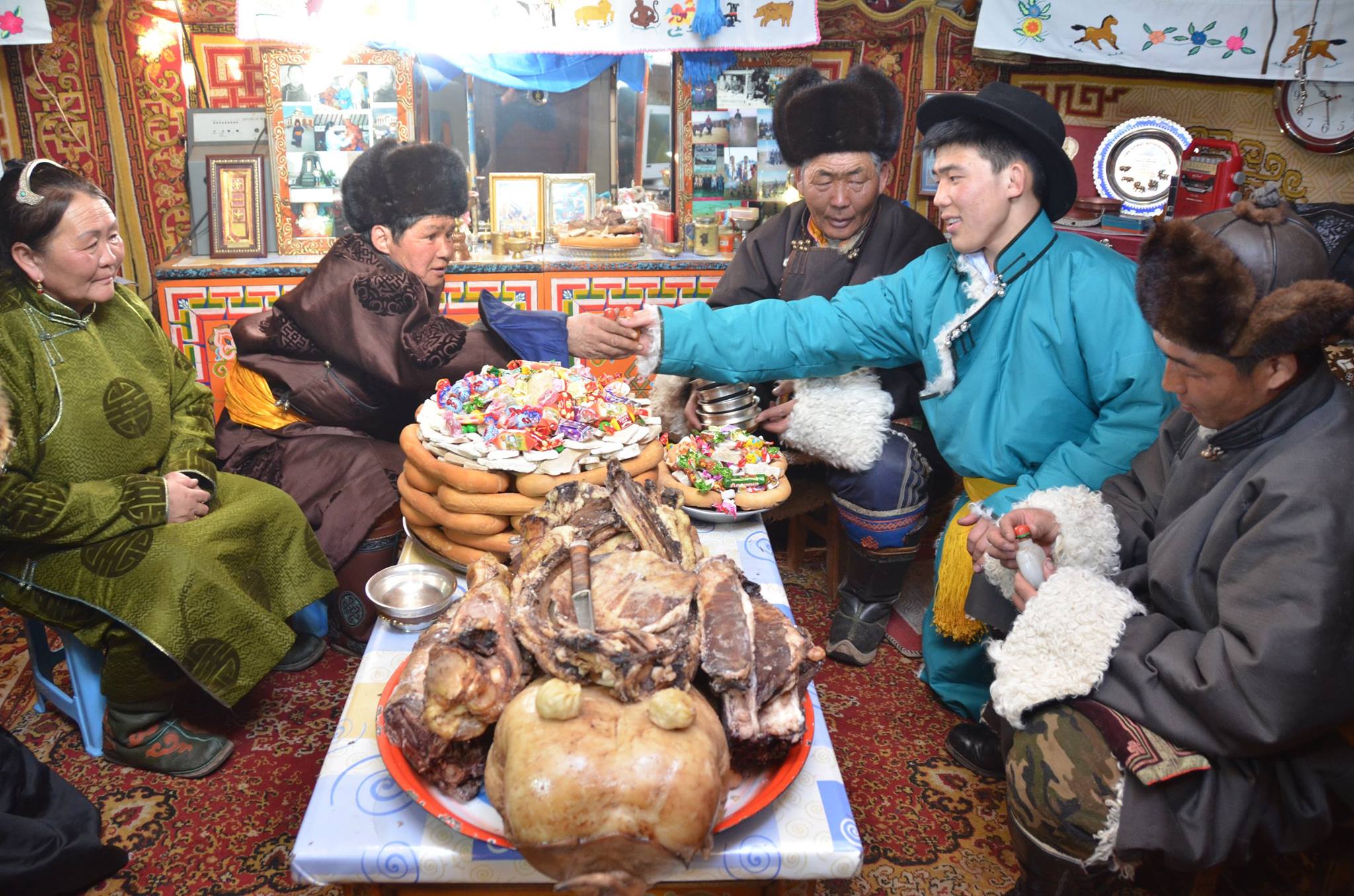
The Dawn of a New Beginning
In the predawn darkness of the first morning of Tsagaan Sar, elderly members of Mongolian families climb the nearest hill to perform a ritual that their ancestors have practiced for centuries. They offer the first cups of milk tea to the spirits of the land and sky, creating a sacred connection between heaven and earth. The milk's whiteness symbolizes purity and new beginnings, themes that resonate throughout the three-day celebration.
Preparation: A Labor of Love
Weeks before the actual celebration, households buzz with activity. Women gather in kitchens to prepare thousands of buuz – traditional dumplings filled with seasoned meat. The making of buuz is more than just food preparation; it's a social event where stories are shared, youngsters learn from their elders, and family bonds are strengthened. A typical family might prepare anywhere from 2,000 to 3,000 buuz, storing them outside in the natural freezer of the Mongolian winter.
The Home: A Symbol of Welcome
Every home undergoes a thorough cleaning before Tsagaan Sar. Mongolians believe that starting the new year in a clean, organized space brings good fortune. Traditional gers (yurts) are decorated with beautiful hand-made items: intricate tapestries, colorful wool rugs, and ceremonial hadags – sacred blue silk scarves that represent the eternal blue sky revered in Mongolian spirituality.
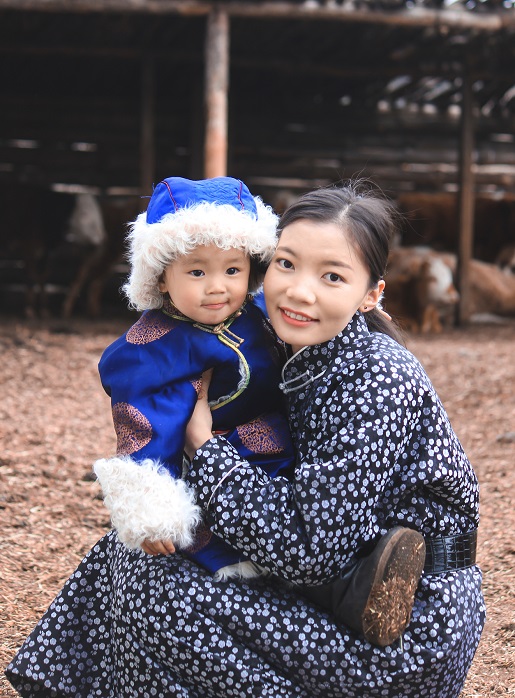
The First Day: A Symphony of Tradition
The first day of Tsagaan Sar begins with the Zolgokh, a traditional greeting ceremony. Younger people greet their elders by grasping their elbows in support while the elder places their arms on top – a physical representation of respect and care. The greeting is accompanied by specific phrases wishing good fortune and longevity, passed down through generations.
Family members exchange gifts, often practical items like warm socks, gloves, or traditional clothing items. Children receive money in red envelopes, a tradition that brings gleaming eyes and excited whispers among the youngest celebration participants.
The Sacred Exchange: The Ritual of the Snuff Bottle
No discussion of Tsagaan Sar customs would be complete without mentioning the хөөрөг (huurug), the traditional Mongolian snuff bottle. These exquisite vessels, often crafted from precious materials like jade, silver, or carved stone, are more than mere containers – they are symbols of respect and friendship. During Tsagaan Sar, the exchange of snuff bottles follows a precise etiquette: when greeting others, especially elders, the host offers their snuff bottle with their right hand, supported at the bottom by their left palm. The recipient accepts it with both hands, a gesture of respect, and admires its craftsmanship before either taking a small pinch of snuff or simply bringing the bottle briefly to their nose as a symbolic gesture. The bottle is then carefully returned with both hands. Each family's huurug often has its own history and story, passed down through generations, and the quality and design of one's snuff bottle can indicate their social status and artistic taste.
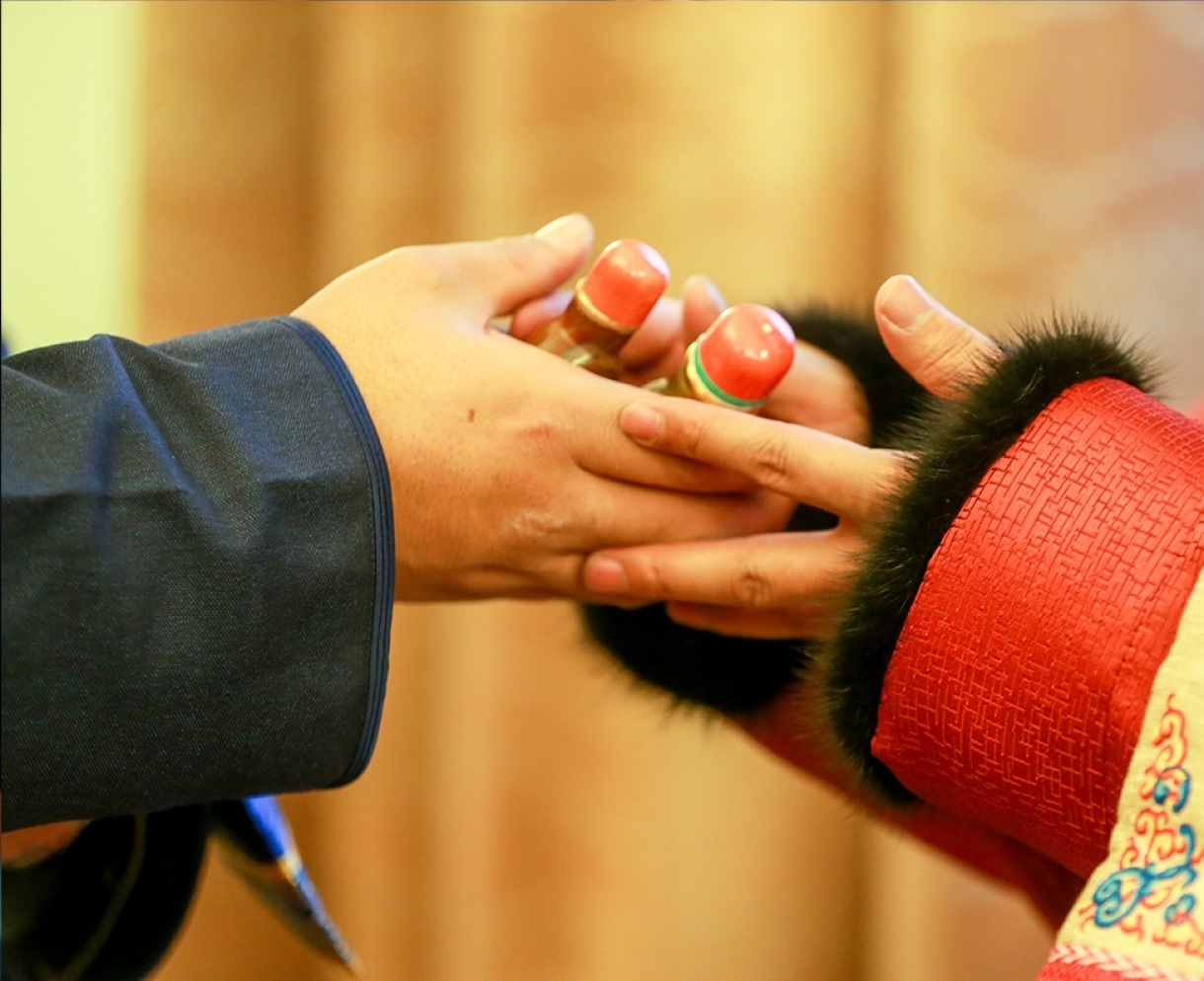
The Feast: A Celebration of Abundance
The Tsagaan Sar feast is a spectacular display of Mongolian cuisine and hospitality. The table groans under the weight of the ul boov (shoe sole cake) – a massive tower of traditional biscuits whose layers represent the stages of life. Around this centerpiece, families arrange platters of white foods (tsagaan idee) – dairy products like aaruul (dried curds), butter, and cheese, symbolizing purity and prosperity.
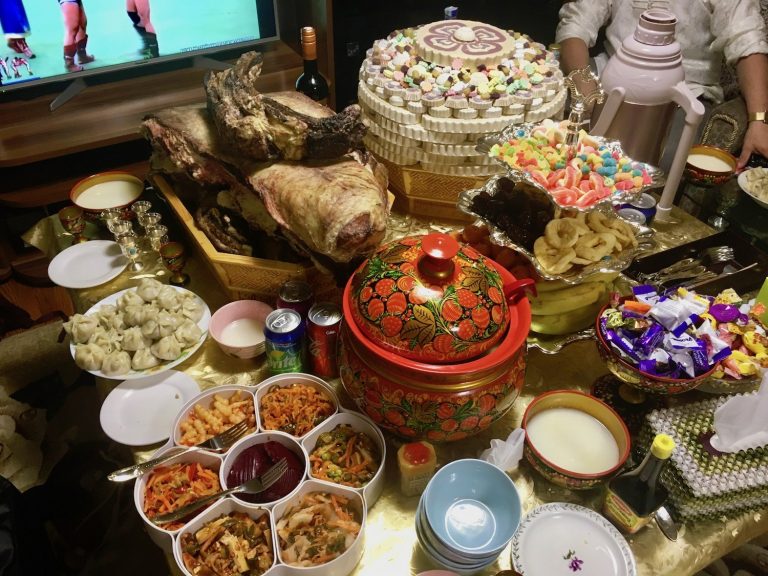
The previously prepared buuz are now steamed to perfection, their savory aroma filling the home. Traditional airag (fermented mare's milk) and shimiin arkhi (milk vodka) flow freely as families share meals, stories, and laughter.
Beyond the Family: Community and Connection
While the first day of Tsagaan Sar is typically reserved for immediate family, the following days see people visiting friends, neighbors, and distant relatives. Each visit follows the same ceremonial pattern – the zolgokh greeting, the sharing of food and drinks, and the exchange of gifts and good wishes. In the countryside, families might travel for hours across the frozen steppes on horseback or in jeeps to visit their loved ones.
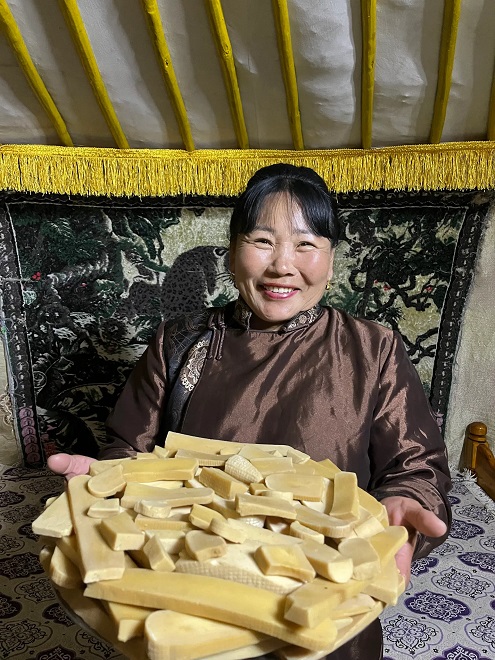
A Reflection of Mongolian Soul
Tsagaan Sar is more than just a holiday; it's a mirror reflecting the Mongolian soul – resilient, generous, and deeply connected to both family and tradition. In the quiet moments between the festivities, as families gather in warm gers while winter winds howl outside, one can feel the weight of history and the strength of cultural bonds that have sustained Mongolian people through centuries of change.
As the celebration draws to a close and families return to their daily lives, they carry with them the renewed sense of connection and purpose that Tsagaan Sar brings. In this way, the White Moon continues to illuminate the path forward, linking past, present, and future in an unbroken chain of tradition and love.
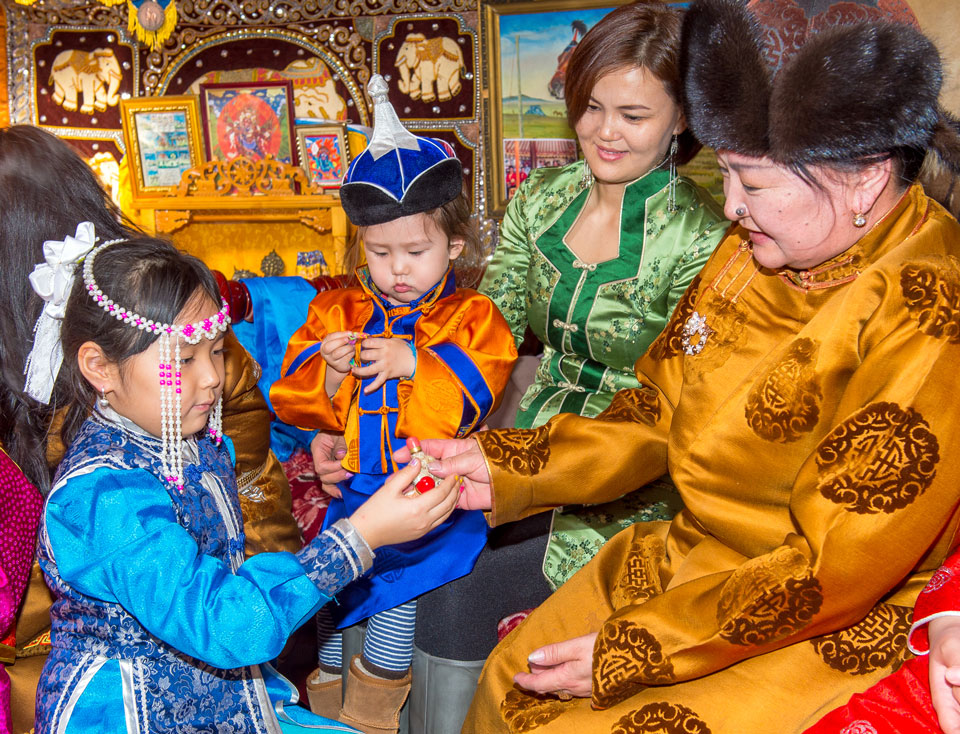
Experiencing Tsagaan Sar as a Visitor
For travelers fortunate enough to visit Mongolia during Tsagaan Sar, the experience offers an unparalleled glimpse into the heart of Mongolian culture. However, this deeply personal family celebration requires careful navigation and respect for local customs.
Timing your visit requires attention to the lunar calendar, as Tsagaan Sar's dates vary each year. The celebration typically falls between late January and early March, during Mongolia's coldest season. Visitors should prepare for temperatures that can plunge below -30°C (-22°F), making appropriate winter gear essential. Also visiting in advance of celebration to immerse yourself in the preparation of Tsagaan Sar is the most fun part. You get to learn how to make buuz/dumpling in Mongolian fashion, what to buy for the holiday table and gift preparing etc.
Finding a Host Family
The most authentic way to experience Tsagaan Sar is through visiting a local nomadic family. Some LIQUI MOLY Extreme Ice Tracks Winter Ice Track Tours include such a visit to a nomadic family. EscapeToMongolia connect travelers with urban families who are open to sharing their traditions with international guests.
During the zolgokh greeting, wait for guidance from your host about proper protocol. As a guest, you'll be shown how to properly greet family elders – younger people should initiate the greeting by extending their arms with palms facing upward.
Learning a few basic Mongolian phrases shows respect for the culture. Key phrases include:
- "Сайн байна уу" (Sain baina uu) - Hello
- "Баярлалаа" (Bayarlalaa) - Thank you
- "Сайхан шинэлээрэй" (Saikhan shineleerei) - Happy Lunar New Year
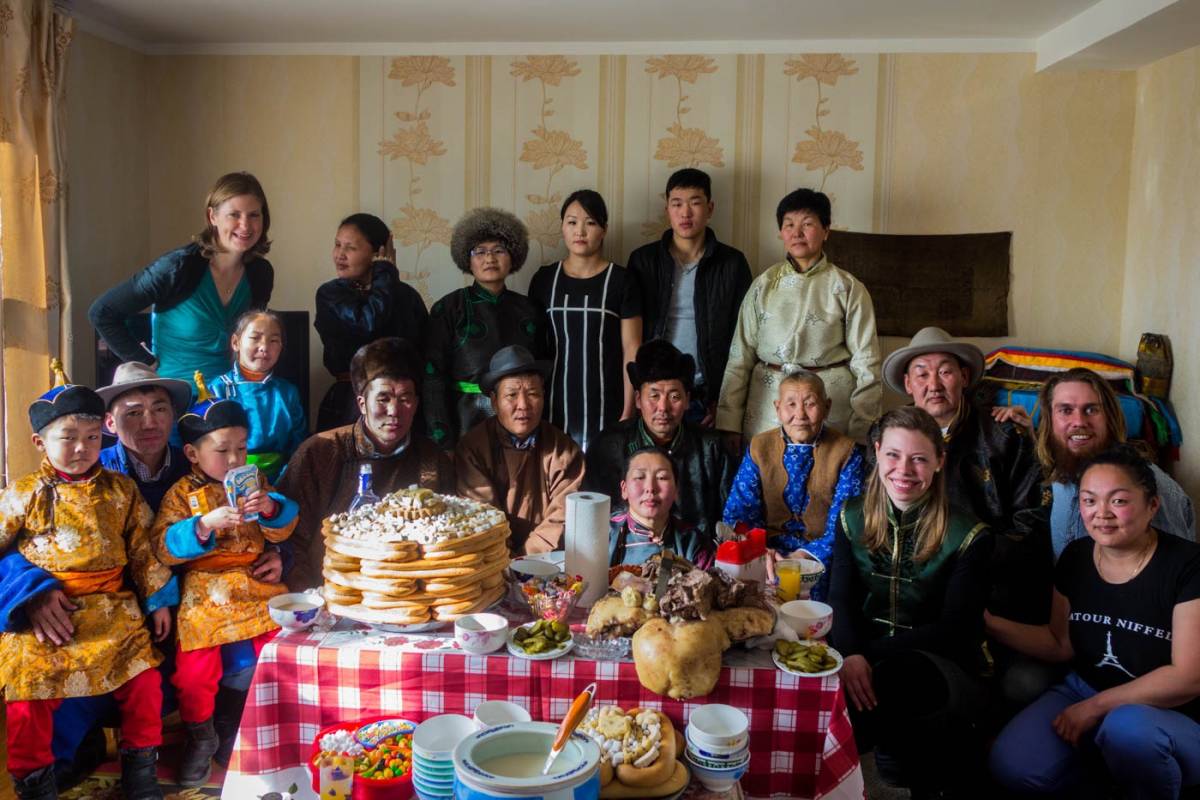
While tourists aren't expected to wear traditional deels (Mongolian robes), clean, formal attire is appreciated. Many guests choose to rent a del for the occasion, which delights local hosts and makes for memorable photographs. Whatever you wear, ensure it is respectful and relatively conservative.
Be prepared for long periods of sitting, eating, and drinking. It's polite to sample every dish offered, though you need not finish everything. When served airag or shimiin arkhi, it's acceptable to take small sips rather than full glasses if you're not accustomed to these traditional beverages.
Making Meaningful Connections
Remember that Tsagaan Sar isn't a tourist spectacle but a deeply meaningful family celebration. The most rewarding experiences come from genuine interest in the culture and willingness to participate respectfully in family activities, from helping to make buuz to listening to elderly family members share stories (even through translation).
Request A Car Rental
Travelling to Mongolia and need a car rental plus extra equipments?




